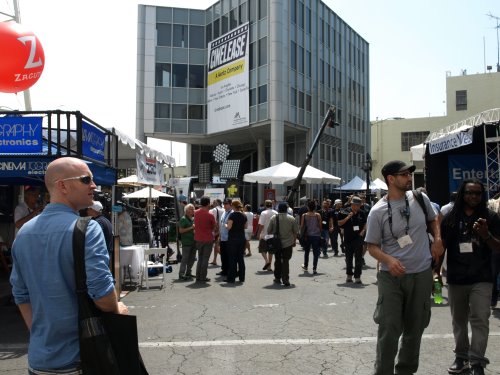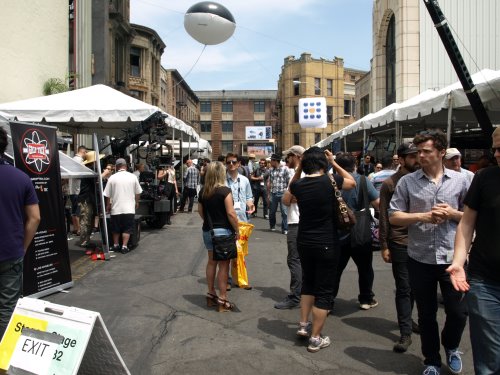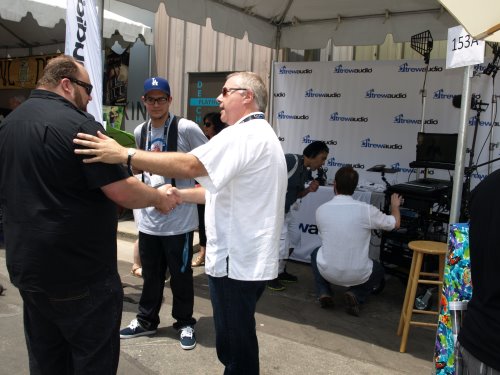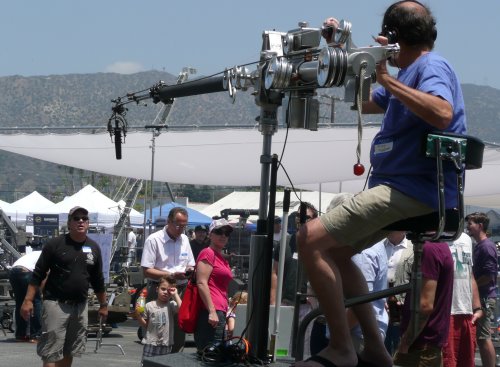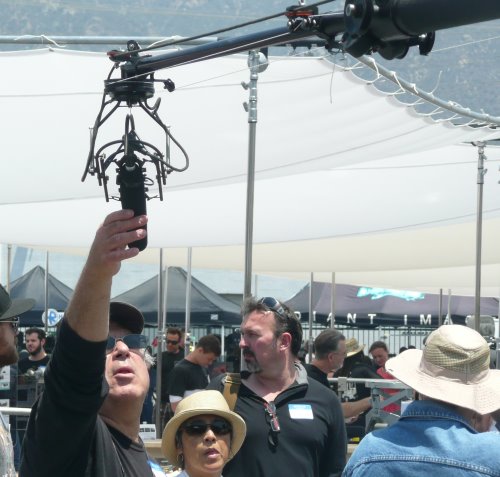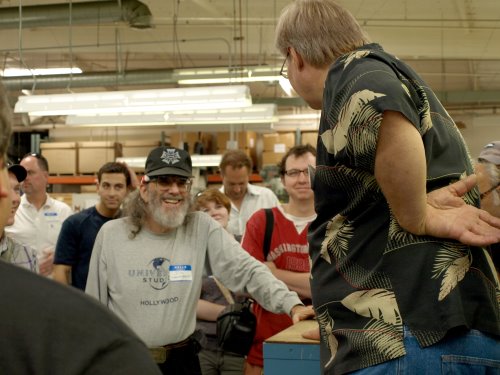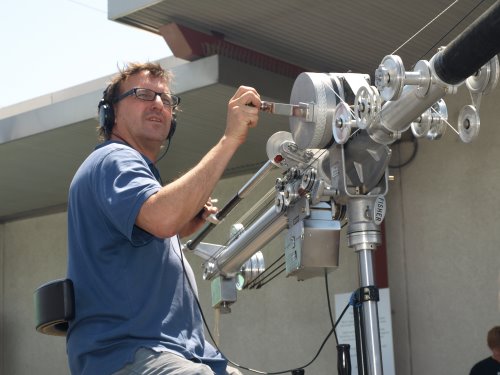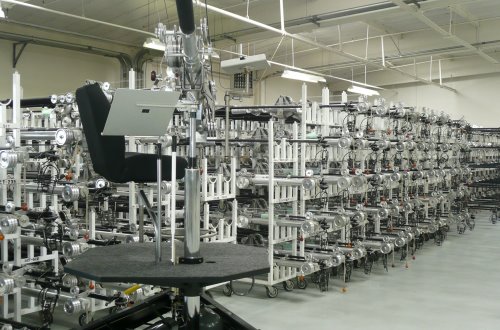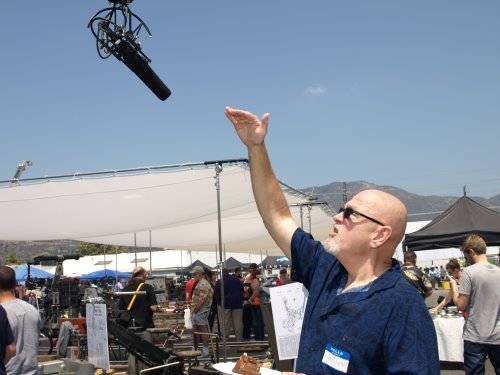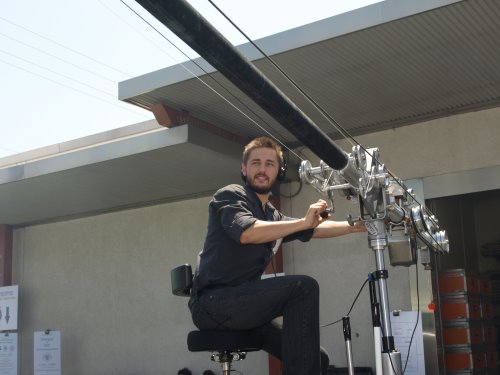Remembering Walt Martin
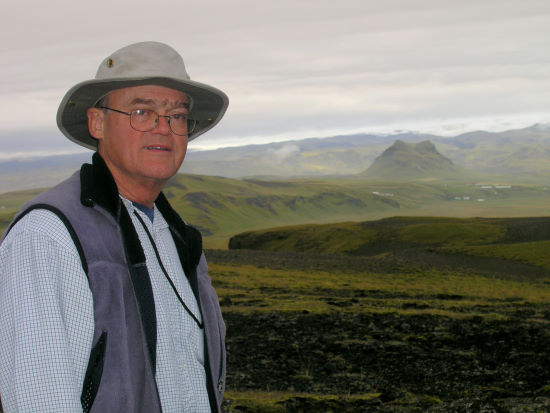
In his long and varied career as a Production Sound Mixer, Walt was proudest of the fifteen pictures he did with Clint Eastwood starting with True Crime in 1999. He was Oscar-nominated for Flags of Our Fathers and recorded sound for Best Picture winner Million Dollar Baby and Best Picture nominees Letters From Iwo Jima and Mystic River. He was a longtime member of the Eastwood team and is affectionately remembered.
CLINT EASTWOOD (in a phone interview):
We completed American Sniper, everybody went home, and then we got the news after a couple weeks that Walt had passed away. It’s like losing a member of the family. Walt was a terrific guy and the easiest person I’ve ever worked with in my life. He brought no antagonism or clumsiness to the work; he was just always ready.
He was an interesting guy to shoot with because, you know, most crew members, you see ’em periodically, but you could go three or four days and not ever see Walt. He had a way of finding a spot for himself where he’s out of everybody’s way. I sometimes shoot quietly [especially] when working with children or active people who aren’t experienced. I would just wave and the boom operator would whisper, “They’re shooting.” I never heard him and it worked really great. Of all the people I’ve ever worked with, he was the most unobtrusive, still getting the job done and in fine fashion.
I’ll miss him on the next project. It’ll be like a missing link, missing part of the chain, because he was that good and that reliable.
GAIL CARROLL-COE
I had the good fortune of doing eight movies for Clint Eastwood with Walt Martin and a few other projects in addition. He began his career by shooting documentaries with his father who was a missionary. I think everyone knows of his accomplishments, but thought I would share some personal things. We traveled quite a bit together for some of the projects. In each location, he made sure he experienced every location to its fullest. The last project took us to Morocco, albeit being difficult, he made the most of it. Walt loved traveling with his wife Elena and his daughter Claudia. He took along his mother-in-law and sister-in-law as well on some trips and made sure everyone had a great time. He loved gardening and sharing his fruit from his trees with others. He loved the Beatles and every Sunday spent some time listening to a program that played their music. Lastly, he loved recording sound.
JONATHAN FUH
Working with Walt was a highlight in my career. He was quiet, unassuming and professional. He loved his family and was loyal to his friends. His wife Elena likes elephants. I remember, on his day off, while on locations, he was looking for elephant motif souvenirs to bring back for her. He will truly be missed by those of us who were fortunate to have worked with him
RANDY JOHNSON
I came to know Walt late in both his career and mine. I was familiar with his large body of work and awards so, when he called to ask me about filling out his sound team on Jersey Boys along with Gail Carroll-Coe, I jumped at the chance to work with him and, of course, with the man, the icon, Clint Eastwood. Working with Walt was a pleasure every day. He had a big heart and was a gentle soul. His sharp sense of humor made the days go by quickly. He was never afraid to laugh at himself and I think the crews sensed that and held him in high regard as a bit of a father figure.
His work on Jersey Boys was multi-layered and thorough. With the help of Mark Agostino and Tim Boot, the task of capturing the live performances went very smoothly. As difficult and challenging as Jersey Boys was, it was still a local shoot and a stage show. Mr. Eastwood’s next project, American Sniper, demanded much more physical effort from Walt, but he embraced the adventure wholeheartedly. He had to climb on vehicles tethered to the top of Humvee’s but I think he was proud of his ability to do whatever was needed to capture the performances. Very sadly, it was his last adventure but one he was very proud of. His talent and humility are his great legacy. I will miss Mr. Walter B. Martin.
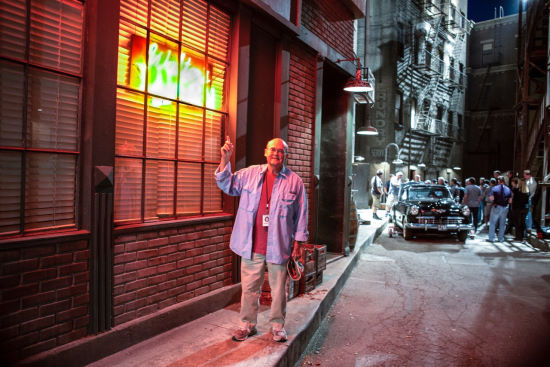
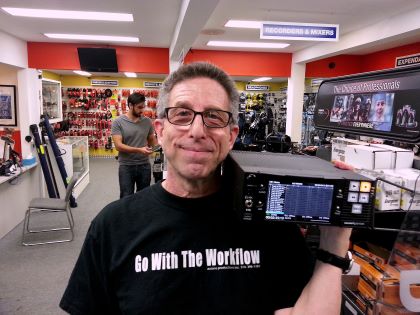
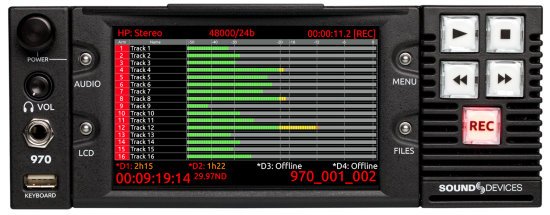
 The 970 is a half rack, 2U device capable of recording up to sixty-four tracks to multiple drives. There are two front-panel drive bays and two eSata drives accessible from the rear panel. The drives may be configured for simultaneous or sequential recording as needed.
The 970 is a half rack, 2U device capable of recording up to sixty-four tracks to multiple drives. There are two front-panel drive bays and two eSata drives accessible from the rear panel. The drives may be configured for simultaneous or sequential recording as needed. Dual power inputs through standard 4-pin XLRs provide operational redundancy. In the event of a failure of both sources, proprietary PowerSafe™ circuitry provides ten seconds of reserve and an orderly shutdown.
Dual power inputs through standard 4-pin XLRs provide operational redundancy. In the event of a failure of both sources, proprietary PowerSafe™ circuitry provides ten seconds of reserve and an orderly shutdown.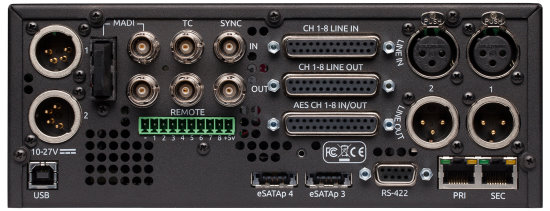
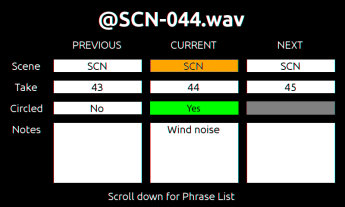 Similar dedicated keystrokes give access to the Metadata screen where scene number, takes, notes and other functions may be rapidly edited. Commonly used phrases may be selected and edited from a list manager.
Similar dedicated keystrokes give access to the Metadata screen where scene number, takes, notes and other functions may be rapidly edited. Commonly used phrases may be selected and edited from a list manager.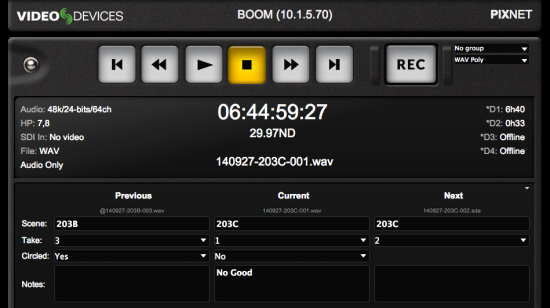
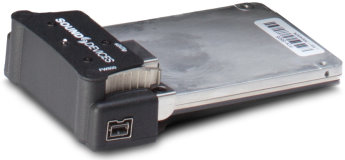 File metadata editing of scene name, take name, notes, track names and reel folders can be done across all drives during, before and after recording.
File metadata editing of scene name, take name, notes, track names and reel folders can be done across all drives during, before and after recording.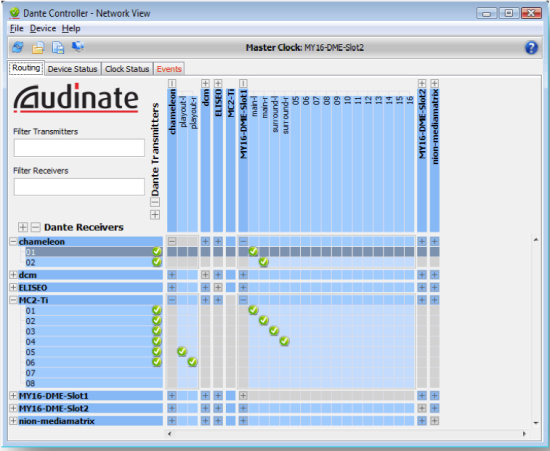
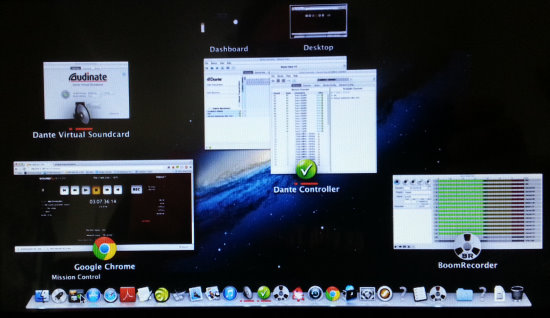
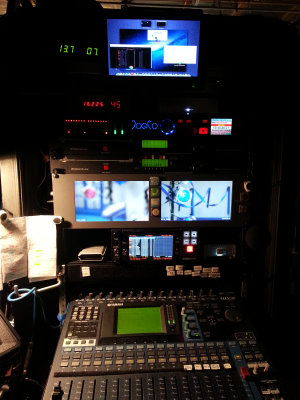 Aside from our most important responsibility of mixing great tracks, we have the added duties of accurate metadata and arming and disarming of tracks. These operations are available both directly on the 970 and via PIXNET.
Aside from our most important responsibility of mixing great tracks, we have the added duties of accurate metadata and arming and disarming of tracks. These operations are available both directly on the 970 and via PIXNET.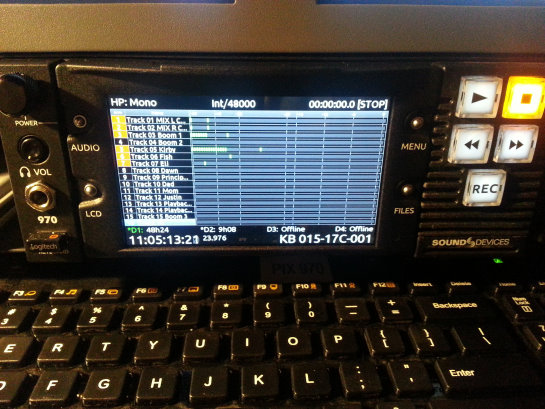
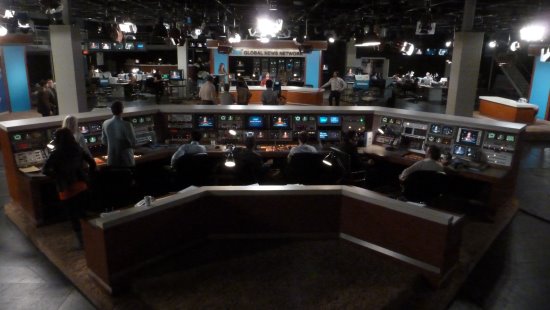
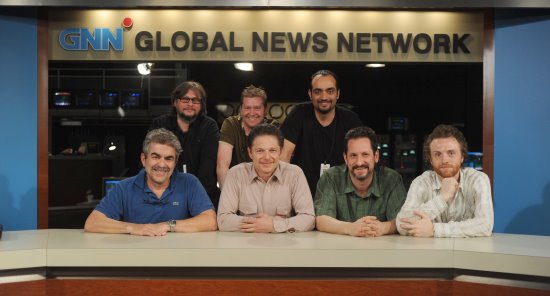
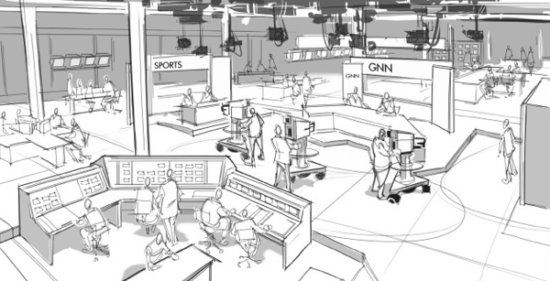

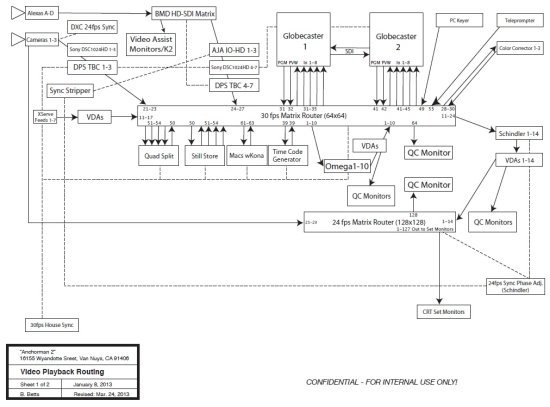
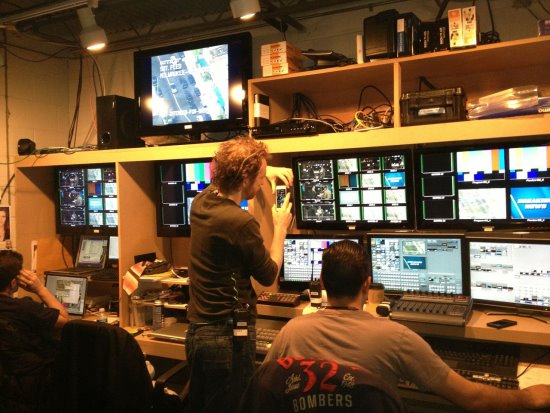
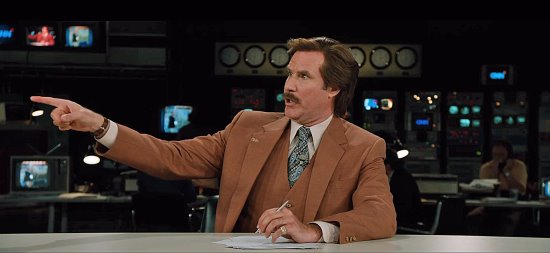
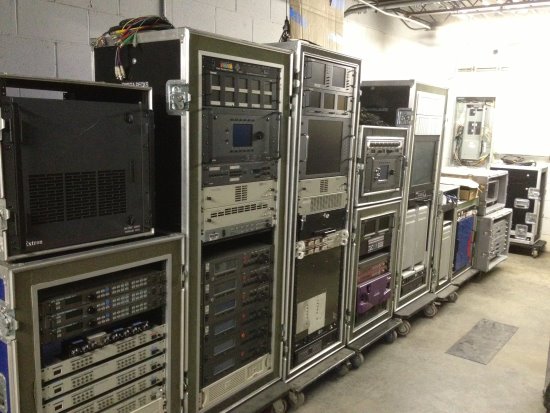
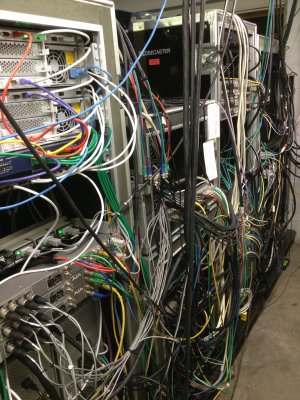

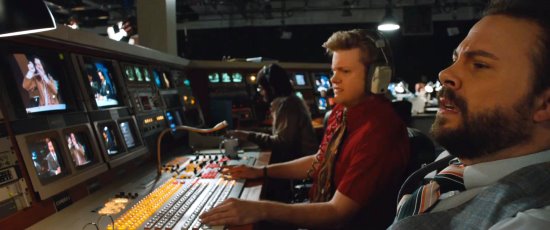
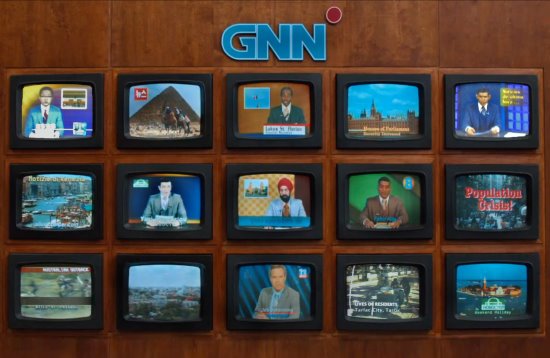
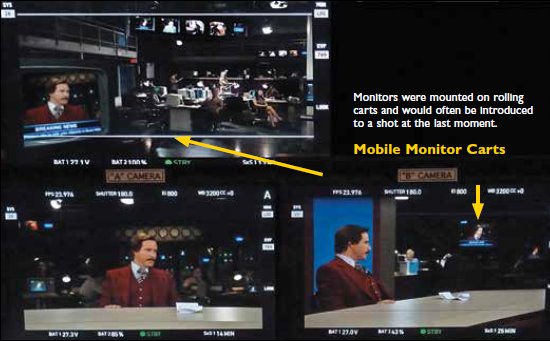

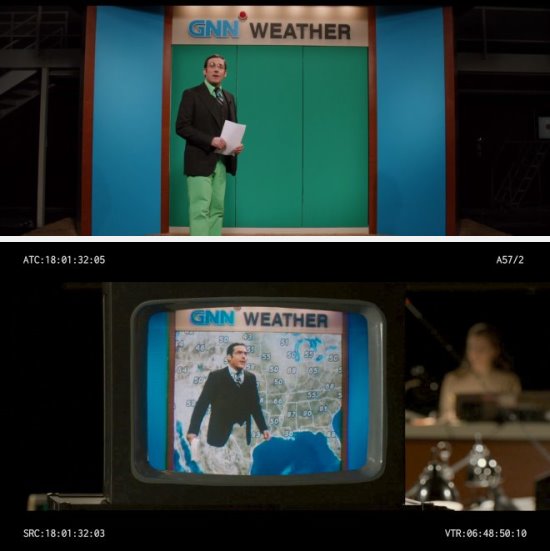
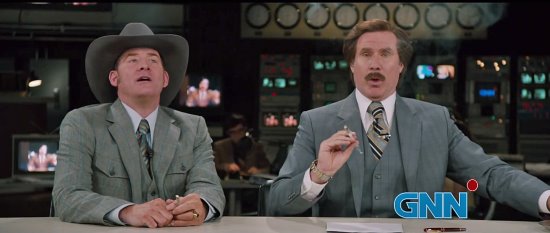
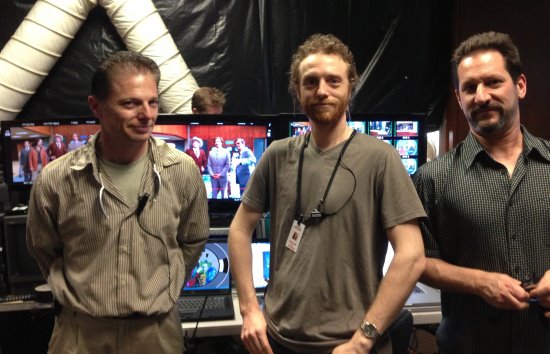
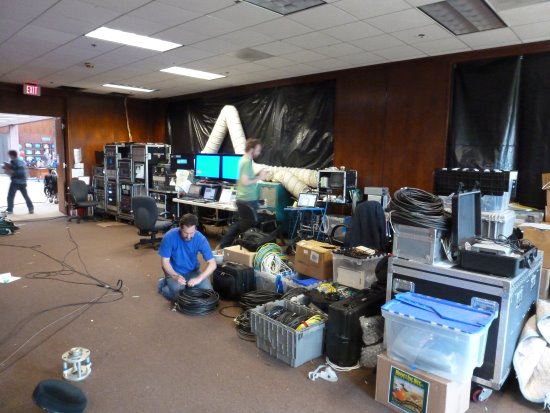
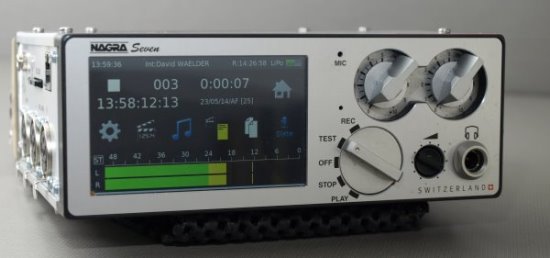
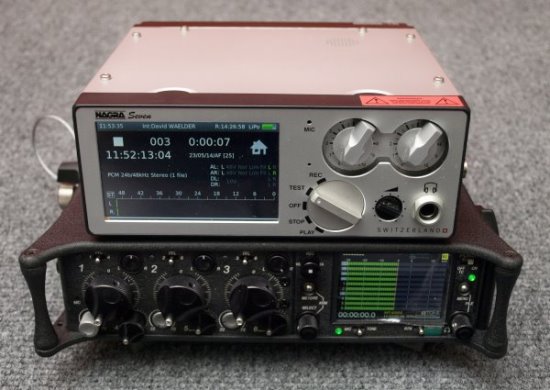
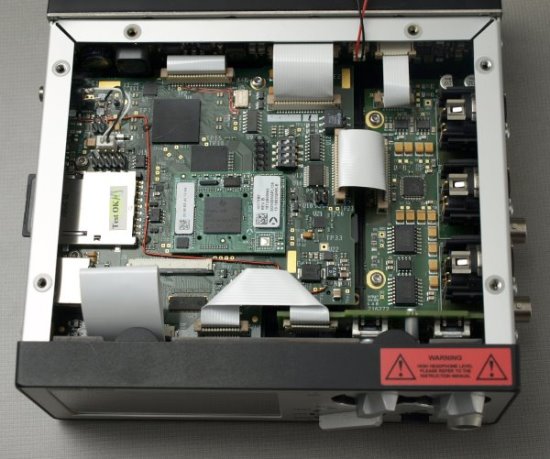
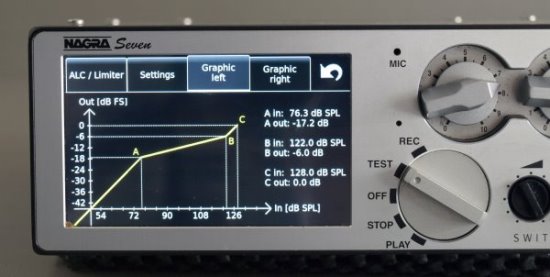
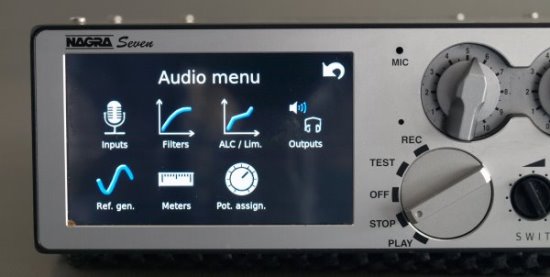
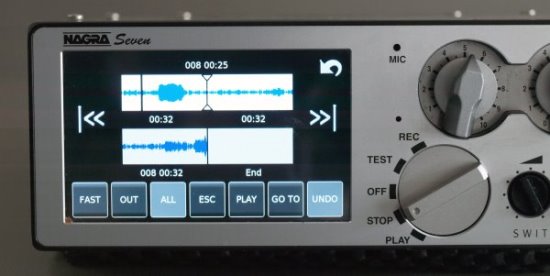
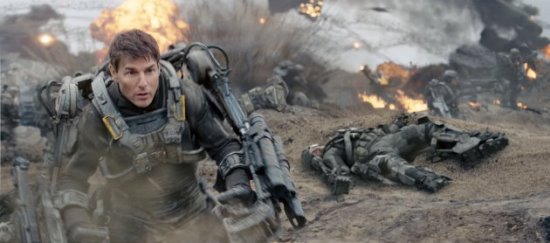
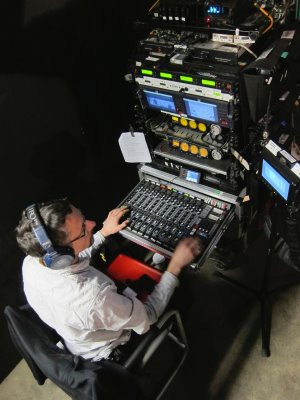 It’s enough to set any Sound Mixer’s alarm bells ringing on multiple fronts although the bells were largely inaudible over the din of the action.
It’s enough to set any Sound Mixer’s alarm bells ringing on multiple fronts although the bells were largely inaudible over the din of the action.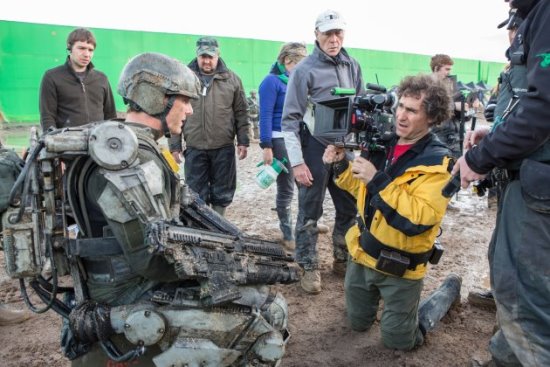
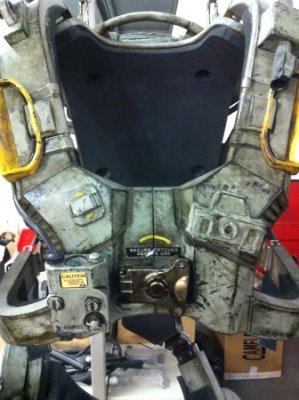 The team who built the Exo-suits was responsible for getting the actors in and out of them every day, making necessary adjustments and keeping them all working smoothly. They were a crack team, and ready with a can of oil to prevent squeaks.
The team who built the Exo-suits was responsible for getting the actors in and out of them every day, making necessary adjustments and keeping them all working smoothly. They were a crack team, and ready with a can of oil to prevent squeaks.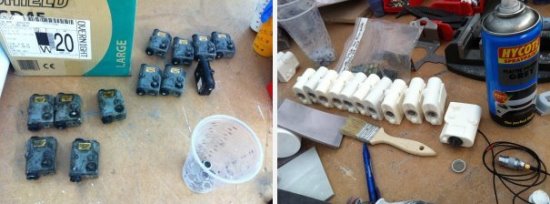
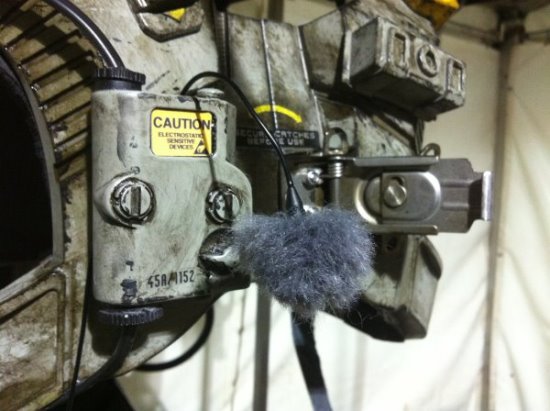
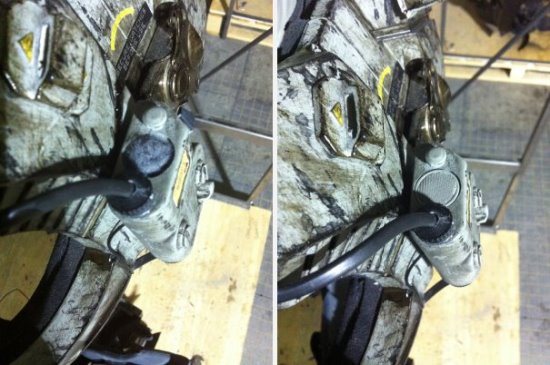
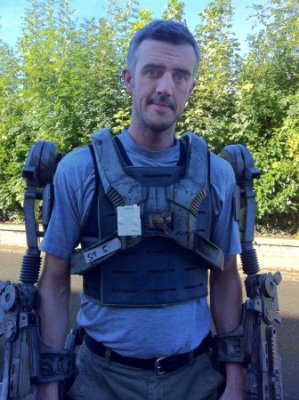 I had told TC that I wanted to put two wireless microphones on him for this scene, one set to a high level, the other set low and in two different frequency blocks in case of any unpredictable interference on the day. He was open to this idea but wanted to test it a few days before, to see that it could be done without affecting the immaculate look of the costume. I was grateful for this as the shot was nerve-wracking enough. The cameras would be rolling from the moment the chopper appeared in the sky until they drove away in the car at the end of the scene—it had never been done before, we might get only one shot at it and we didn’t want to risk a visible sound pack spoiling the shot. We put the microphones on, mounted the packs on the ankles, and pulled and flapped the trousers to make sure we wouldn’t see any lumps in the downdraft of the helicopter blades. When TC gave the thumbs-up, we were good to go and it turned out to be a great scene. In the end there was a lot of RF around that morning that wasn’t present on the scout so it took an Xmas tree of antennae to bring in enough signal, but we got it! We all had to be in military costume in case we were seen from the air so we had to rationalise that we were in the Royal Engineers Corps and that wireless operators play a crucial role in modern warfare!
I had told TC that I wanted to put two wireless microphones on him for this scene, one set to a high level, the other set low and in two different frequency blocks in case of any unpredictable interference on the day. He was open to this idea but wanted to test it a few days before, to see that it could be done without affecting the immaculate look of the costume. I was grateful for this as the shot was nerve-wracking enough. The cameras would be rolling from the moment the chopper appeared in the sky until they drove away in the car at the end of the scene—it had never been done before, we might get only one shot at it and we didn’t want to risk a visible sound pack spoiling the shot. We put the microphones on, mounted the packs on the ankles, and pulled and flapped the trousers to make sure we wouldn’t see any lumps in the downdraft of the helicopter blades. When TC gave the thumbs-up, we were good to go and it turned out to be a great scene. In the end there was a lot of RF around that morning that wasn’t present on the scout so it took an Xmas tree of antennae to bring in enough signal, but we got it! We all had to be in military costume in case we were seen from the air so we had to rationalise that we were in the Royal Engineers Corps and that wireless operators play a crucial role in modern warfare!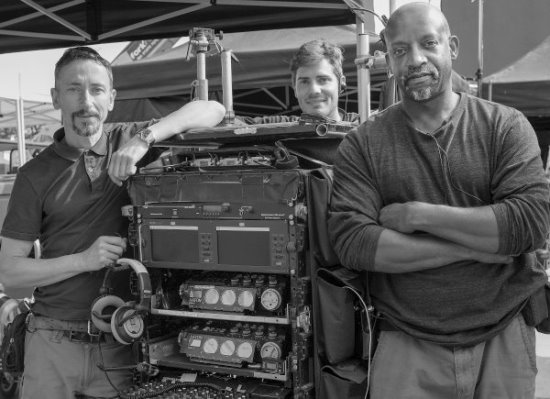
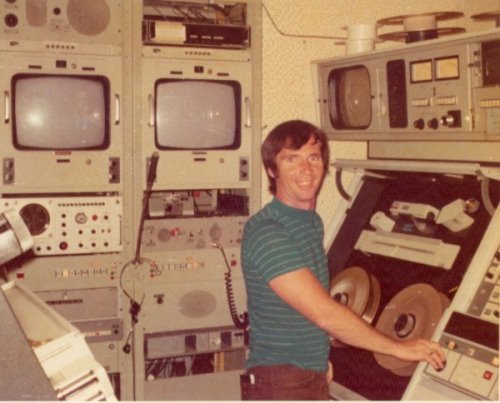
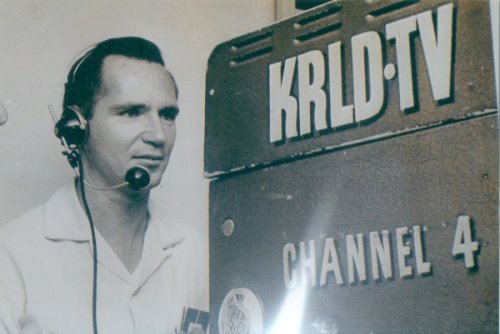
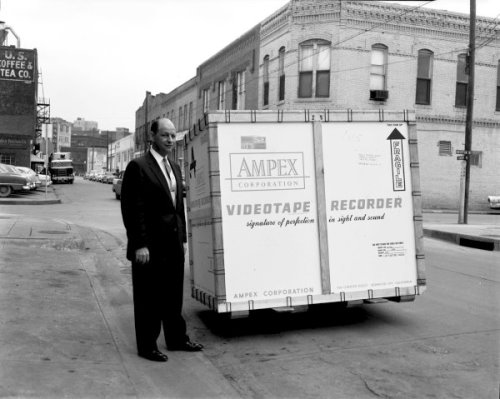
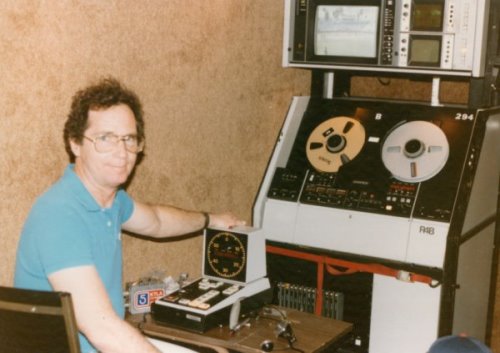
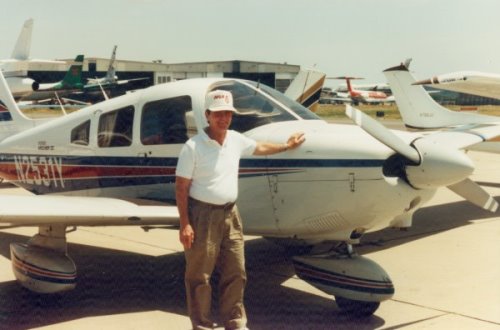
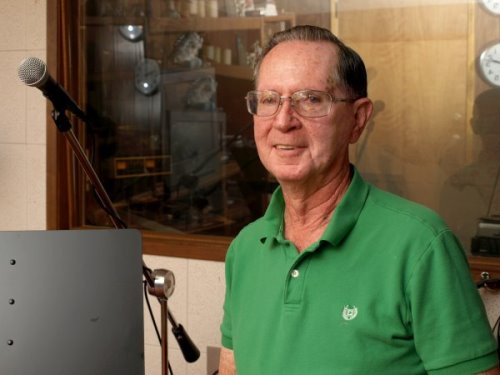
 Reflective objects are verboten in or even near the volume. Any Scotchlite strips on shoes or clothing need to be taped over, and if the anodizing is worn off of the clutch knobs on your fishpole, they will need to be covered with black paper tape. Some poles’ shiny tube sections are a problem too, and black cloth tubular shrouds can be purchased to slip over the entire fishpole. J.L. Fisher has black-anodized booms available to rent for use on capture shoots. If you have work lights on your cart, be sure their light bulbs are not directly visible to any of the capture cameras.
Reflective objects are verboten in or even near the volume. Any Scotchlite strips on shoes or clothing need to be taped over, and if the anodizing is worn off of the clutch knobs on your fishpole, they will need to be covered with black paper tape. Some poles’ shiny tube sections are a problem too, and black cloth tubular shrouds can be purchased to slip over the entire fishpole. J.L. Fisher has black-anodized booms available to rent for use on capture shoots. If you have work lights on your cart, be sure their light bulbs are not directly visible to any of the capture cameras.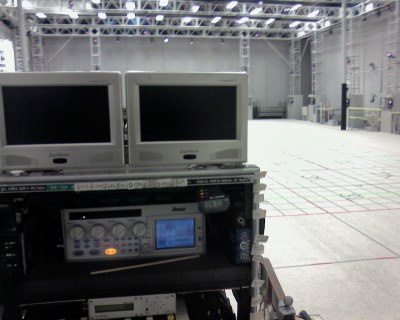 The usual recording format is mix on Channel 1, boom (if used) iso’d on Channel 2, and wireless mikes (if used) iso’d on succeeding channels. You will send a line-level feed of your mix to the IT department, where it will be distributed to the reference cameras and imported into the editing software. Your isos may also be sent into the system during production.
The usual recording format is mix on Channel 1, boom (if used) iso’d on Channel 2, and wireless mikes (if used) iso’d on succeeding channels. You will send a line-level feed of your mix to the IT department, where it will be distributed to the reference cameras and imported into the editing software. Your isos may also be sent into the system during production.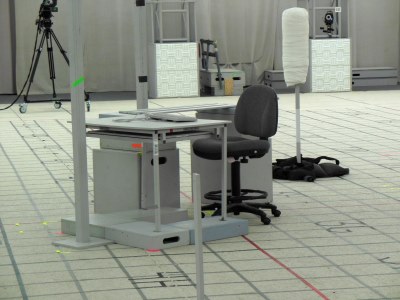 Unless long cable runs are involved, this impedance mismatch usually does not cause problems. (See the cable articles for using balun transformers.) The best you can do is to use mike cables with XLR TC sources and 75 coax cables with BNC TC sources. If this does not match the TC input connector of your recorder, try a simple hard-wired adapter before going to a balun. If the recorder’s display shows a solid indication of the proper frame rate and there are no error flags, you are probably okay. If this is a long-term project, you should have time for a pre-production test, if not, cross your fingers. (Or invest $10,000 in a time-domain reflectometer to measure the jitter in the “eye pattern” and determine the stability of the TC signal at your end.)
Unless long cable runs are involved, this impedance mismatch usually does not cause problems. (See the cable articles for using balun transformers.) The best you can do is to use mike cables with XLR TC sources and 75 coax cables with BNC TC sources. If this does not match the TC input connector of your recorder, try a simple hard-wired adapter before going to a balun. If the recorder’s display shows a solid indication of the proper frame rate and there are no error flags, you are probably okay. If this is a long-term project, you should have time for a pre-production test, if not, cross your fingers. (Or invest $10,000 in a time-domain reflectometer to measure the jitter in the “eye pattern” and determine the stability of the TC signal at your end.)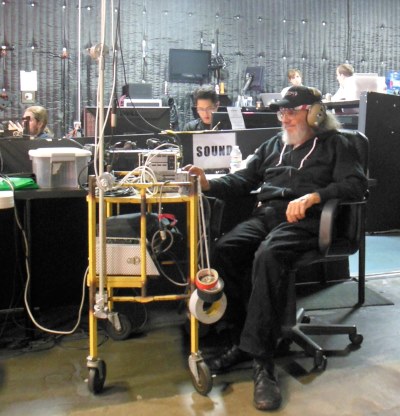 When it comes to booming a CGI–capture scene, there is good news and bad news. The good news is that you don’t have to worry about boom shadows. The bad news is:
When it comes to booming a CGI–capture scene, there is good news and bad news. The good news is that you don’t have to worry about boom shadows. The bad news is: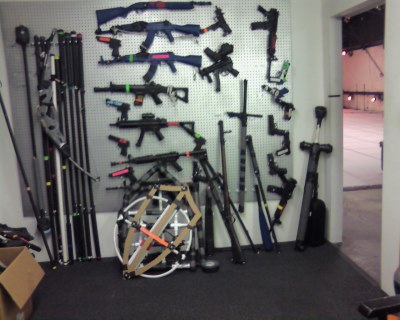 In addition to the usual noise problems on a live-action stage, the volume has some unique ones:
In addition to the usual noise problems on a live-action stage, the volume has some unique ones: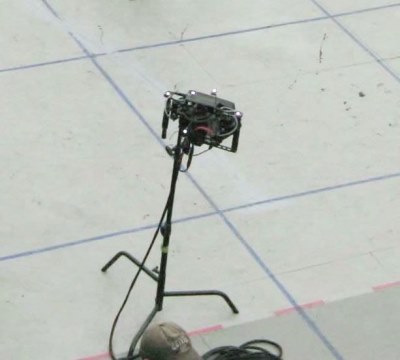 When a virtual camera is in use on a multi-day shoot, the capture days may not be contiguous. After a certain amount of capture has been done, the main crew and cast may be put on hiatus while the director wanders around the empty capture stage with the scene data being played back repeatedly. The crudely rendered video will appear in the handheld monitor, from the POV of its current position. The director can then “shoot” coverage of the scene: master, close-ups, over-the-shoulders, stacked-profile tracking shots, etc. This procedure ensures that all the angles “work.” If not, the director has two options: re-capture the scene on another day; or fix the problem in the computer by dragging characters into the desired position and/or digitally rearranging the props, set or background.
When a virtual camera is in use on a multi-day shoot, the capture days may not be contiguous. After a certain amount of capture has been done, the main crew and cast may be put on hiatus while the director wanders around the empty capture stage with the scene data being played back repeatedly. The crudely rendered video will appear in the handheld monitor, from the POV of its current position. The director can then “shoot” coverage of the scene: master, close-ups, over-the-shoulders, stacked-profile tracking shots, etc. This procedure ensures that all the angles “work.” If not, the director has two options: re-capture the scene on another day; or fix the problem in the computer by dragging characters into the desired position and/or digitally rearranging the props, set or background.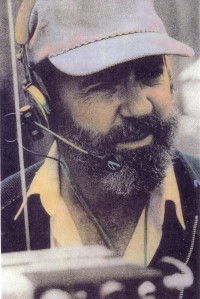 One day in 1981, while standing in line at a bank, I struck up a conversation with an older gentleman who said he was a retired Prop Master. When I replied that I was a Boom Operator, he said that his son, Chris McLaughlin, was a Boom Operator. “Really, Chris McLaughlin is revered among boom operators. He works with Jim Webb and gets equal billing with Jim as the sound team.” The next day, I got a call from Chris. “Who are you, and why are you saying nice things about me to my pop?” We chatted a bit about mikes and booms and stuff. “What do you like,” he asked? “A Schoeps is my favorite.” “We use an 815 on everything. We did All the Presidents’ Men with one 815 underneath and won an Oscar.” You had to be spot-on with an 815 or it would sound funky; if you could handle one all the time you were a real Boom Operator.
One day in 1981, while standing in line at a bank, I struck up a conversation with an older gentleman who said he was a retired Prop Master. When I replied that I was a Boom Operator, he said that his son, Chris McLaughlin, was a Boom Operator. “Really, Chris McLaughlin is revered among boom operators. He works with Jim Webb and gets equal billing with Jim as the sound team.” The next day, I got a call from Chris. “Who are you, and why are you saying nice things about me to my pop?” We chatted a bit about mikes and booms and stuff. “What do you like,” he asked? “A Schoeps is my favorite.” “We use an 815 on everything. We did All the Presidents’ Men with one 815 underneath and won an Oscar.” You had to be spot-on with an 815 or it would sound funky; if you could handle one all the time you were a real Boom Operator.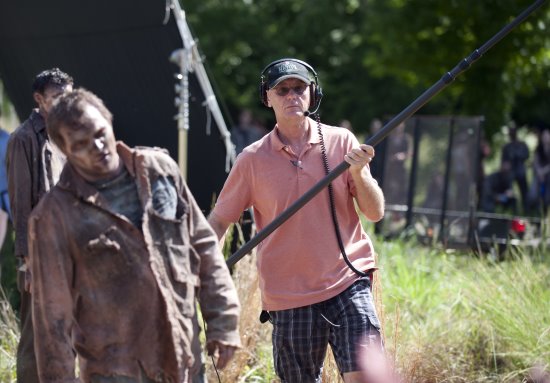
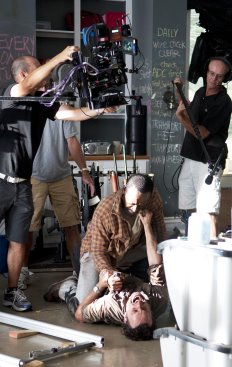 Well, seven days went by and I still hadn’t booked anything for the following week, so I thought, “Heck, three weeks with a bunch of rotting corpses in sunny Georgia couldn’t be too disgusting, and it’s not like I have to eat lunch with them.” Like any Boy Scout film worker during lean times, I called the Sound Mixer back and asked, “Still looking for a good Boom Operator?” He said, “Yes, come on down.” I shook off the disquiet that they were only three days from needing someone and hadn’t yet filled the position. “Oh well, they’re paying me housing and per diem, plus a box rental and rental car … I’m outta here!”
Well, seven days went by and I still hadn’t booked anything for the following week, so I thought, “Heck, three weeks with a bunch of rotting corpses in sunny Georgia couldn’t be too disgusting, and it’s not like I have to eat lunch with them.” Like any Boy Scout film worker during lean times, I called the Sound Mixer back and asked, “Still looking for a good Boom Operator?” He said, “Yes, come on down.” I shook off the disquiet that they were only three days from needing someone and hadn’t yet filled the position. “Oh well, they’re paying me housing and per diem, plus a box rental and rental car … I’m outta here!”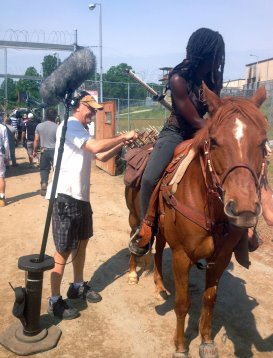 Oh, and it turns out, I did have to eat with those zombie things. Nothing like lunch with a gooey corpse sitting across the table from me, spoonfeeding itself through displaced dentures into its black-and-blue prosthetic face—yummy. But, it’s those little tufts of half-dead hair that really creep me out.
Oh, and it turns out, I did have to eat with those zombie things. Nothing like lunch with a gooey corpse sitting across the table from me, spoonfeeding itself through displaced dentures into its black-and-blue prosthetic face—yummy. But, it’s those little tufts of half-dead hair that really creep me out.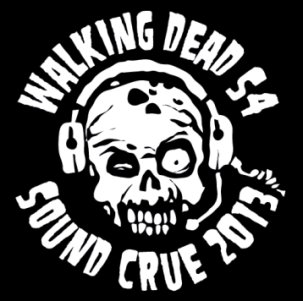 Later, I learned that, due to time constraints, upper management restricted freedom to make corrections. The production schedule was so relentless that, at one time, they had adopted a policy of using radio microphones exclusively. They didn’t ever want to see a boom over any actor and were determined to fix any sound problems in Post. The Sound Mixer went on to tell me stories about how they would wait for “Roll Sound,” get the sticks and then, at the last second, slip the boom in for some of the close-ups.
Later, I learned that, due to time constraints, upper management restricted freedom to make corrections. The production schedule was so relentless that, at one time, they had adopted a policy of using radio microphones exclusively. They didn’t ever want to see a boom over any actor and were determined to fix any sound problems in Post. The Sound Mixer went on to tell me stories about how they would wait for “Roll Sound,” get the sticks and then, at the last second, slip the boom in for some of the close-ups.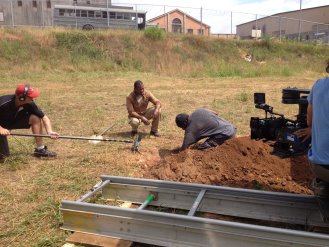 Obstacles and frustrations aside, I figured I better work hard, have patience and keep a good attitude. The actors were fabulous and supported my efforts from the beginning. In fact, I remember the Sound Mixer telling me, when he was trying to entice me to do the show, that the actors were very warm and accommodating and kept him motivated to do good work. People like Andy Lincoln (as Rick Grimes), Norman Reedus (as Daryl), Scott Wilson (as Hershel), IronE Singleton (as T-Dog), Jeffrey DeMunn (as Dale), Lauren Cohan (as Maggie) and Steven Yeun (as Glenn) would come up to me and give me a good-morning hug. I hardly knew these folks, and they welcomed me like family. Jeffrey DeMunn said it first, and he said it the most, “WE are the Walking Dead” WE, the cast, crew and abovethe- line executives, ARE THE WALKING DEAD! It’s still true of the cast to this day. The Georgia heat, the remote locations, the grueling production schedule, the absence of zombie hygiene and chiggers, make this a very difficult show, but the spirit the actors bring to the project keeps the crew working together as a team.
Obstacles and frustrations aside, I figured I better work hard, have patience and keep a good attitude. The actors were fabulous and supported my efforts from the beginning. In fact, I remember the Sound Mixer telling me, when he was trying to entice me to do the show, that the actors were very warm and accommodating and kept him motivated to do good work. People like Andy Lincoln (as Rick Grimes), Norman Reedus (as Daryl), Scott Wilson (as Hershel), IronE Singleton (as T-Dog), Jeffrey DeMunn (as Dale), Lauren Cohan (as Maggie) and Steven Yeun (as Glenn) would come up to me and give me a good-morning hug. I hardly knew these folks, and they welcomed me like family. Jeffrey DeMunn said it first, and he said it the most, “WE are the Walking Dead” WE, the cast, crew and abovethe- line executives, ARE THE WALKING DEAD! It’s still true of the cast to this day. The Georgia heat, the remote locations, the grueling production schedule, the absence of zombie hygiene and chiggers, make this a very difficult show, but the spirit the actors bring to the project keeps the crew working together as a team.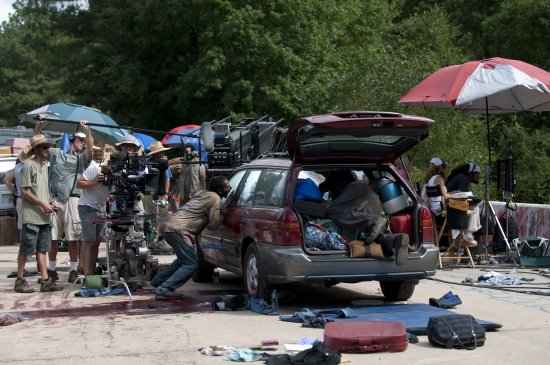
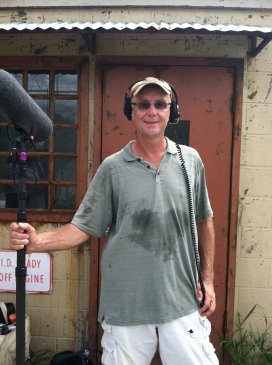 Episode 405, “Internment,” is illustrative. The Director, David Boyd, one of the former DPs on the show, believes in guerrilla-style filmmaking, using multiple cameras in obscure positions. The episode took place mostly in the prison cells, where Scott Wilson (Hershel) would tend to the near-death patients. These cells are really only about 10 feet by 10 feet with a bunk bed on one side. Director Boyd staged the scene with three actors, three cameras and two operators. Radios couldn’t be used because the actors had blood on their chests and air masks on their faces so my assignment was to squeeze into the cell with everyone else and get the dialog. My regular position in these scenes was either standing on the upper bunk or squeezed between an operator and the wall, only inches from the talent.
Episode 405, “Internment,” is illustrative. The Director, David Boyd, one of the former DPs on the show, believes in guerrilla-style filmmaking, using multiple cameras in obscure positions. The episode took place mostly in the prison cells, where Scott Wilson (Hershel) would tend to the near-death patients. These cells are really only about 10 feet by 10 feet with a bunk bed on one side. Director Boyd staged the scene with three actors, three cameras and two operators. Radios couldn’t be used because the actors had blood on their chests and air masks on their faces so my assignment was to squeeze into the cell with everyone else and get the dialog. My regular position in these scenes was either standing on the upper bunk or squeezed between an operator and the wall, only inches from the talent.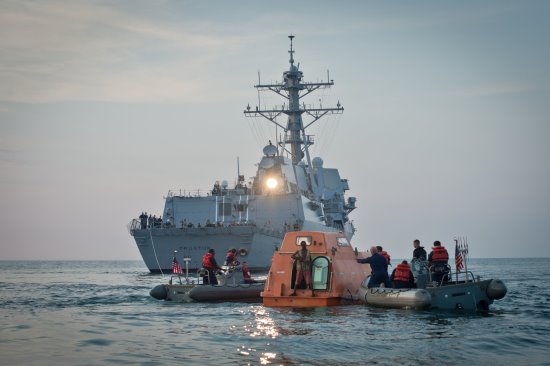
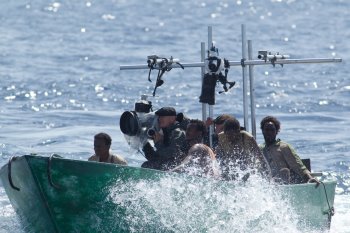 Having worked on five James Bond films, I was no stranger to action sequences involving water, especially the boat-chase sequences on Quantum of Solace filmed in Panama. On Captain Phillips, I needed waterproof lavalier microphones that also sounded good out of the water so I chose to use Da-Cappo DA04s (now Que Audio performance series in the USA). These are very popular in theater because of their very small size but have great waterproof qualities due to the inlet size being smaller than a droplet of water. I mounted them upside down so that no water settled on the microphone. I had to develop a system for getting longer range reception for recording in the high-powered pirate skiffs. I used Audio 2040 mini-tx radios in aquapacs on the pirates. The receivers were built into secret compartments in the skiffs where audio was recorded and re-transmitted to the bigger boat that we were all on. We were regularly recording up to 16 tracks and feeding a mix to Video Assist, the Director and Camera Operators. I recently wrapped on Heart of the Sea, with Ron Howard where again I was able to use what I had learnt. Months before I started on the film I said to the boat builders, “I need you to build these secret compartments…”
Having worked on five James Bond films, I was no stranger to action sequences involving water, especially the boat-chase sequences on Quantum of Solace filmed in Panama. On Captain Phillips, I needed waterproof lavalier microphones that also sounded good out of the water so I chose to use Da-Cappo DA04s (now Que Audio performance series in the USA). These are very popular in theater because of their very small size but have great waterproof qualities due to the inlet size being smaller than a droplet of water. I mounted them upside down so that no water settled on the microphone. I had to develop a system for getting longer range reception for recording in the high-powered pirate skiffs. I used Audio 2040 mini-tx radios in aquapacs on the pirates. The receivers were built into secret compartments in the skiffs where audio was recorded and re-transmitted to the bigger boat that we were all on. We were regularly recording up to 16 tracks and feeding a mix to Video Assist, the Director and Camera Operators. I recently wrapped on Heart of the Sea, with Ron Howard where again I was able to use what I had learnt. Months before I started on the film I said to the boat builders, “I need you to build these secret compartments…”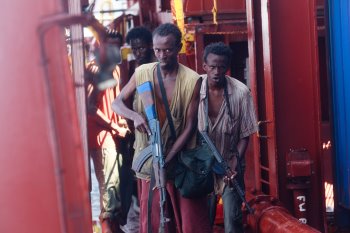 On Captain Phillips, we were based in Malta on a container ship, which was our studio for much of the film. Each department had a base in one or more of the containers to store equipment and carry out any maintenance. We still needed to be highly portable as we would shoot inside the ship, perhaps in the engine room or cabins while heading out to sea and returning to port, and shoot on decks and the bridge when at sea. There were a lot of stairs, and some passageways were very narrow. Generally, we were shooting multi-camera without rehearsals and all with improvised dialog, sometimes with the scene playing out between several groups in different parts of the ship.
On Captain Phillips, we were based in Malta on a container ship, which was our studio for much of the film. Each department had a base in one or more of the containers to store equipment and carry out any maintenance. We still needed to be highly portable as we would shoot inside the ship, perhaps in the engine room or cabins while heading out to sea and returning to port, and shoot on decks and the bridge when at sea. There were a lot of stairs, and some passageways were very narrow. Generally, we were shooting multi-camera without rehearsals and all with improvised dialog, sometimes with the scene playing out between several groups in different parts of the ship.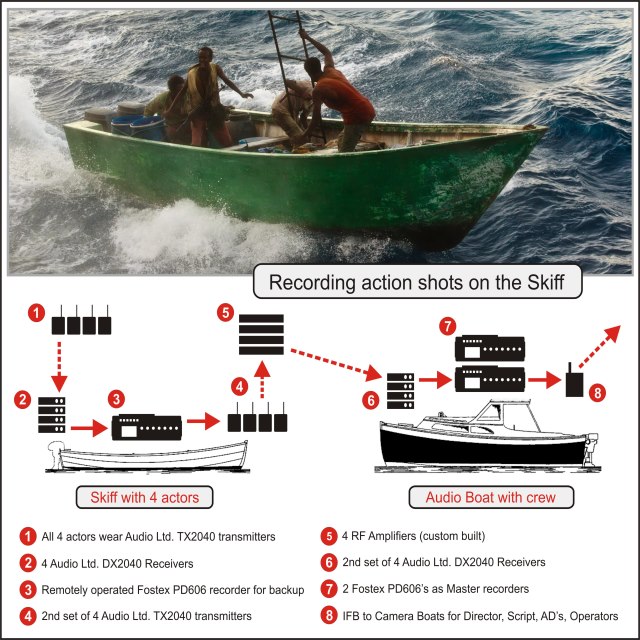
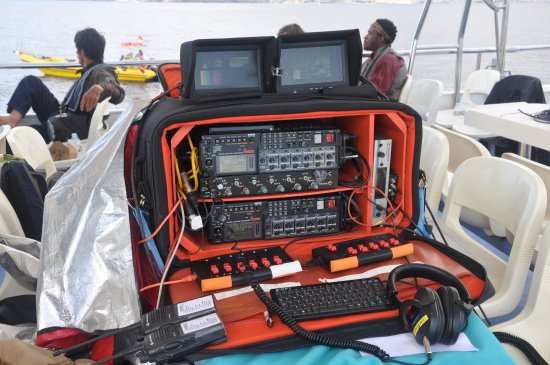
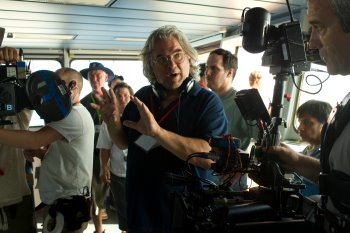 Oliver Tarney was Supervising Sound Editor. I had also worked with him on United 93 and the two Sherlock Holmes films with Guy Ritchie. One of the best things we were able to do was to get Oliver to spend a weekend with us on the ship recording sound FX. Not only did he get the FX that he needed, but he also got to experience the ship and to understand how it should sound at sea and its geography. He also got to experience being in the lifeboat—known by us as the vomit vessel—certainly not a pleasure craft!
Oliver Tarney was Supervising Sound Editor. I had also worked with him on United 93 and the two Sherlock Holmes films with Guy Ritchie. One of the best things we were able to do was to get Oliver to spend a weekend with us on the ship recording sound FX. Not only did he get the FX that he needed, but he also got to experience the ship and to understand how it should sound at sea and its geography. He also got to experience being in the lifeboat—known by us as the vomit vessel—certainly not a pleasure craft!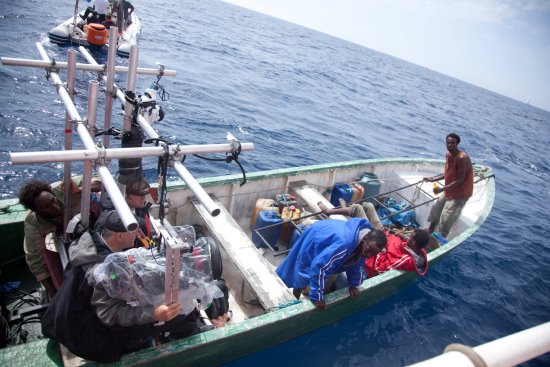
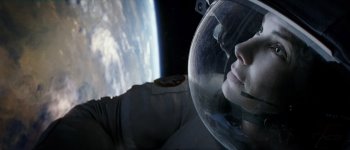 Gravity was a completely different experience from anything I had previously worked on. When I first got the call and was told that there were only two actors in the film and that there is no sound in space, it sounded like the perfect job! Then when I met Alfonso Cuarón and he started to talk about his ideas for the film, I was hooked and immediately knew that this was going to be something special. Every few years there is a film that breaks the technological boundaries— this year it was Gravity. The first issue was that both the cameras and the actors could be on robotic arms. I had recently shot a small sequence with these and knew that, although the arms could move with not too much noise, the associated power supplies and controllers were very noisy. So the first job was to negotiate that these could be extended and built into blimps far away from the action.
Gravity was a completely different experience from anything I had previously worked on. When I first got the call and was told that there were only two actors in the film and that there is no sound in space, it sounded like the perfect job! Then when I met Alfonso Cuarón and he started to talk about his ideas for the film, I was hooked and immediately knew that this was going to be something special. Every few years there is a film that breaks the technological boundaries— this year it was Gravity. The first issue was that both the cameras and the actors could be on robotic arms. I had recently shot a small sequence with these and knew that, although the arms could move with not too much noise, the associated power supplies and controllers were very noisy. So the first job was to negotiate that these could be extended and built into blimps far away from the action.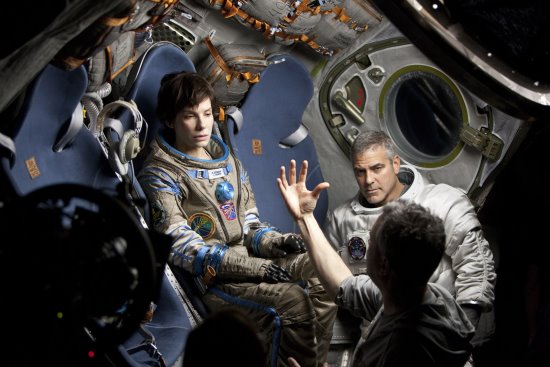
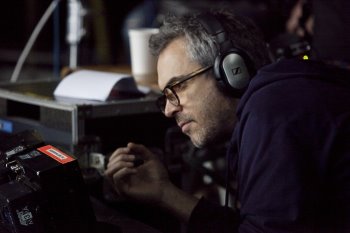 Alfonso Cuarón originally had a plan for all of the radio conversations and OS dialog to be live, and we had planned to have different rooms in the studio for those to be performances. However, due to artist availability and other issues, this proved to be impractical so we prerecorded as much as we could. Most of the pre-records were guides that were re-recorded as ADR in Post Production.
Alfonso Cuarón originally had a plan for all of the radio conversations and OS dialog to be live, and we had planned to have different rooms in the studio for those to be performances. However, due to artist availability and other issues, this proved to be impractical so we prerecorded as much as we could. Most of the pre-records were guides that were re-recorded as ADR in Post Production.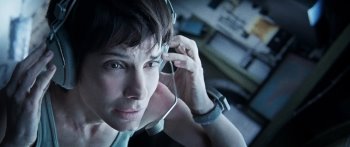 Here was another opportunity to use the Da-Cappo microphones— this time because of the very small size. The microphones used were a mixture of a Da-Cappo capsule that Jim McBride, our tech support engineer, had fashioned to an arm connected to the inner helmet and a latex shield that we made for both visual accuracy and to reject noise from outside the helmet. A second Sanken COS-11 was sewn into the inner helmet as were earpieces for communication. We also had in-ear molds made for some scenes. Each different piece of headgear that Sandra Bullock wears in the film contained practical microphones and earpieces. Even the classic Russian headset that she uses at one point has a built-in transmitter and receiver. We achieved this by borrowing bare 2040 mini-transmitter boards from Audio Ltd. and building them in to headsets.
Here was another opportunity to use the Da-Cappo microphones— this time because of the very small size. The microphones used were a mixture of a Da-Cappo capsule that Jim McBride, our tech support engineer, had fashioned to an arm connected to the inner helmet and a latex shield that we made for both visual accuracy and to reject noise from outside the helmet. A second Sanken COS-11 was sewn into the inner helmet as were earpieces for communication. We also had in-ear molds made for some scenes. Each different piece of headgear that Sandra Bullock wears in the film contained practical microphones and earpieces. Even the classic Russian headset that she uses at one point has a built-in transmitter and receiver. We achieved this by borrowing bare 2040 mini-transmitter boards from Audio Ltd. and building them in to headsets.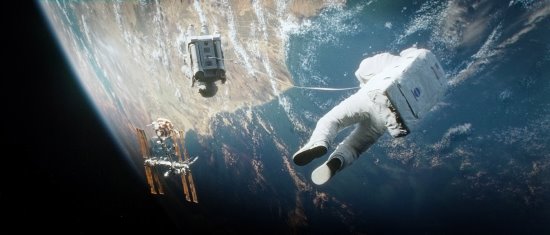
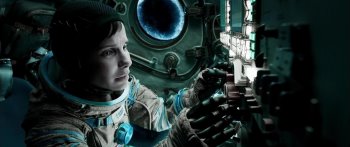 The Director and the 1st AD needed to be able to communicate with the actors and DP, Camera and other departments without distracting the actors when giving technical cues. The costumes and helmets so completely isolated the actors that they needed an audio feed both to hear each other and also to hear their own voices. Allowing them to hear themselves, but at a reduced level to avoid distraction, required a second layer of IFB feed to each.
The Director and the 1st AD needed to be able to communicate with the actors and DP, Camera and other departments without distracting the actors when giving technical cues. The costumes and helmets so completely isolated the actors that they needed an audio feed both to hear each other and also to hear their own voices. Allowing them to hear themselves, but at a reduced level to avoid distraction, required a second layer of IFB feed to each.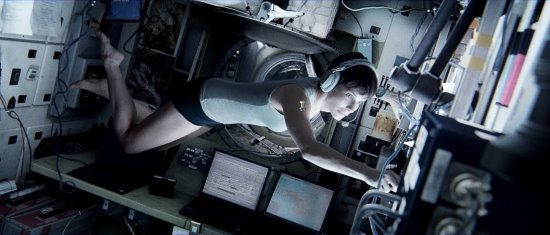
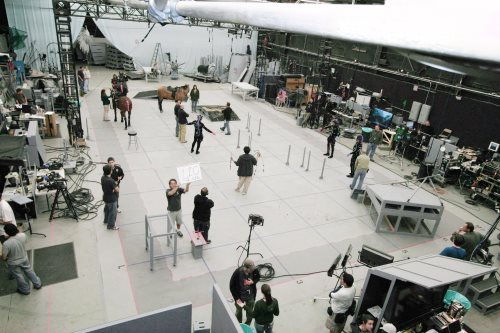
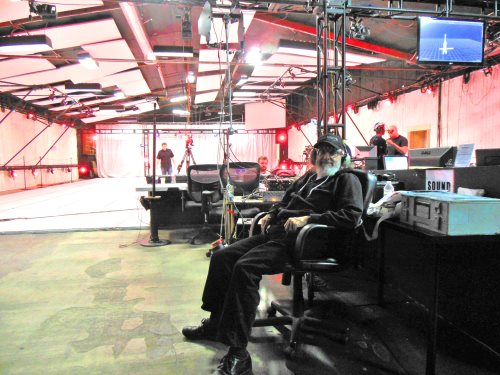
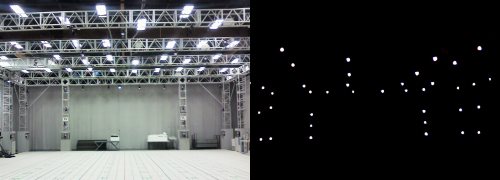
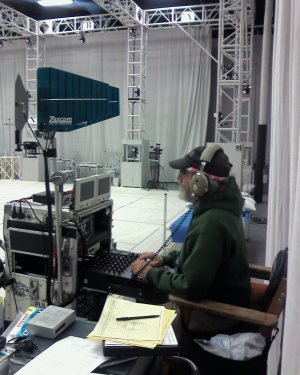 If MoCap is to be used on the actors’ faces, smaller, BB-sized reflective spheres are glued directly to the skin, sometimes in the hundreds. When too many have fallen off, work stops until they can be replaced, a process that takes some time because they must be precisely positioned.
If MoCap is to be used on the actors’ faces, smaller, BB-sized reflective spheres are glued directly to the skin, sometimes in the hundreds. When too many have fallen off, work stops until they can be replaced, a process that takes some time because they must be precisely positioned.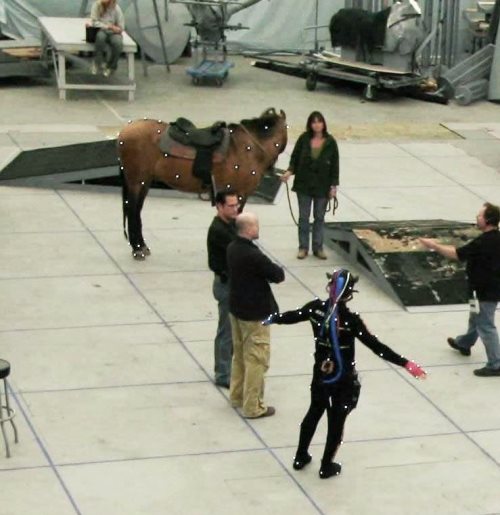
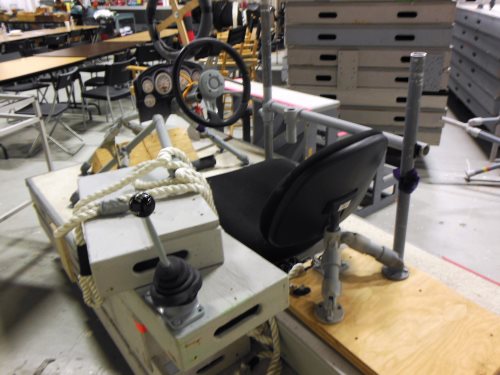
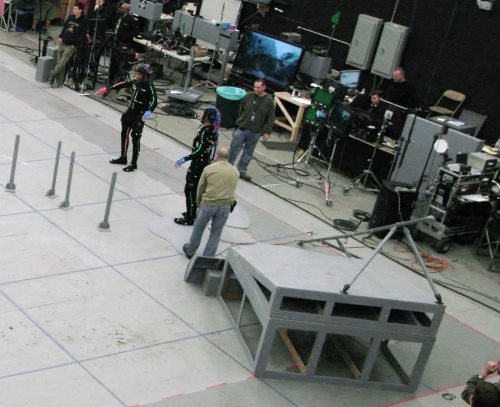
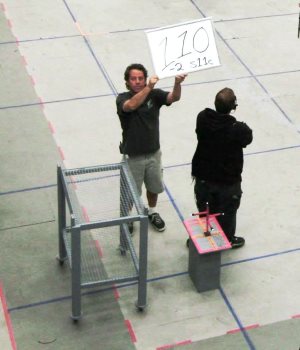 Multiple conventional HD video cameras are used in the volume for “reference.” These cameras cover the scene in wide shots and close-ups on each character. This allows the Director to judge an actor’s performance before the data is rendered into the animated character. A secondary function is to sort out body parts when the MoCap system gets confused and an arm sprouts out of a CGI character’s head. Looking at the reference shot, the Editor can figure out to whom it belongs, and mouse-drag it back into its proper place. In most stages, the cameras are hard-wired into the system so they have house-sync TC and do not normally require TC slating. They may use DV cassettes and/or send the video directly into the system.
Multiple conventional HD video cameras are used in the volume for “reference.” These cameras cover the scene in wide shots and close-ups on each character. This allows the Director to judge an actor’s performance before the data is rendered into the animated character. A secondary function is to sort out body parts when the MoCap system gets confused and an arm sprouts out of a CGI character’s head. Looking at the reference shot, the Editor can figure out to whom it belongs, and mouse-drag it back into its proper place. In most stages, the cameras are hard-wired into the system so they have house-sync TC and do not normally require TC slating. They may use DV cassettes and/or send the video directly into the system.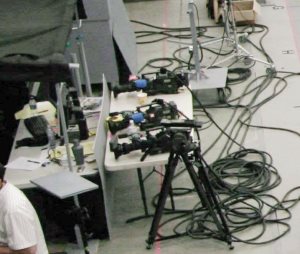 A graph of the “realism” of a character versus its acceptability starts at the lower left with obvious cartoon figures and slowly rises as the point moves to the right with increasing realism. But before the character’s image reaches a peak at the right edge, where photographic images of actual human beings fall, it turns sharply downward into the valley, and only climbs out as the character becomes “photo-realistic.” Even an image of a real human corpse (possible disease transmission) is in the valley, as would be that of a super-realistic zombie.
A graph of the “realism” of a character versus its acceptability starts at the lower left with obvious cartoon figures and slowly rises as the point moves to the right with increasing realism. But before the character’s image reaches a peak at the right edge, where photographic images of actual human beings fall, it turns sharply downward into the valley, and only climbs out as the character becomes “photo-realistic.” Even an image of a real human corpse (possible disease transmission) is in the valley, as would be that of a super-realistic zombie.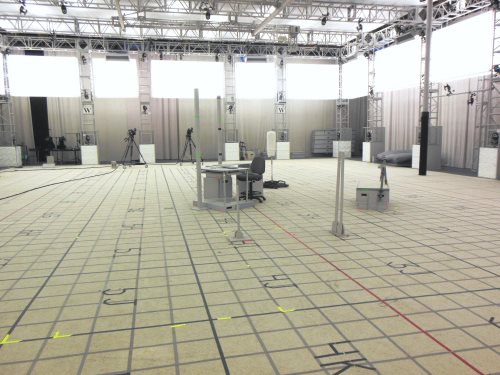


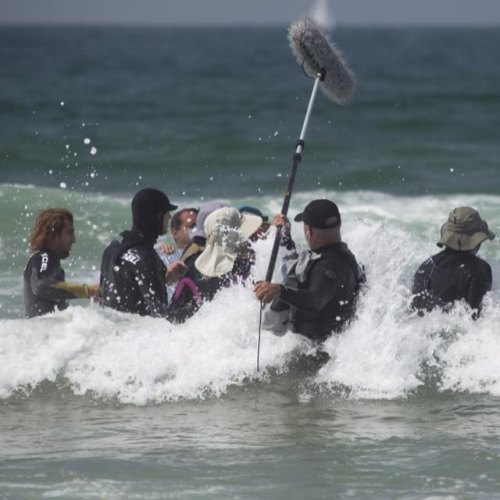
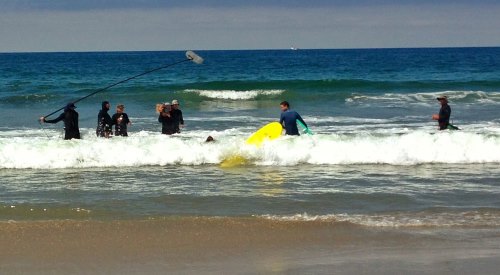
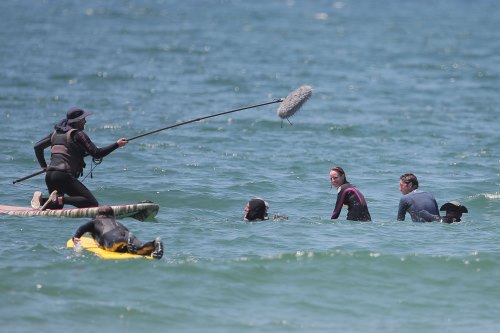
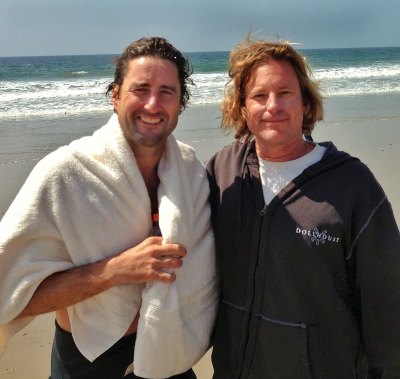
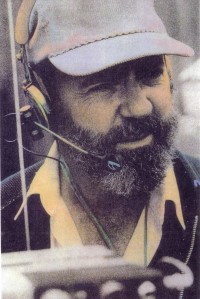 James E. Webb Jr. is justifiably renowned for his work developing multi-track recording on a series of films for Robert Altman. He captured the dialog from multiple cast members and interlocking story lines on such iconic films as Nashville, Buffalo Bill and the Indians, 3 Women, and A Wedding. He pioneered the multi-track process.
James E. Webb Jr. is justifiably renowned for his work developing multi-track recording on a series of films for Robert Altman. He captured the dialog from multiple cast members and interlocking story lines on such iconic films as Nashville, Buffalo Bill and the Indians, 3 Women, and A Wedding. He pioneered the multi-track process.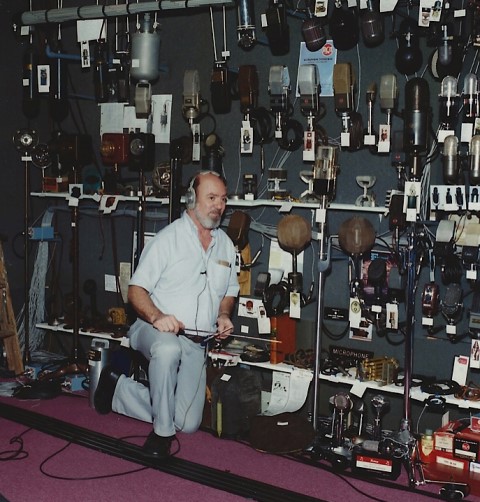
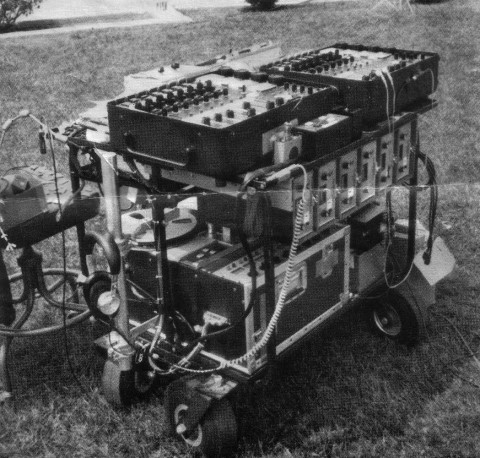
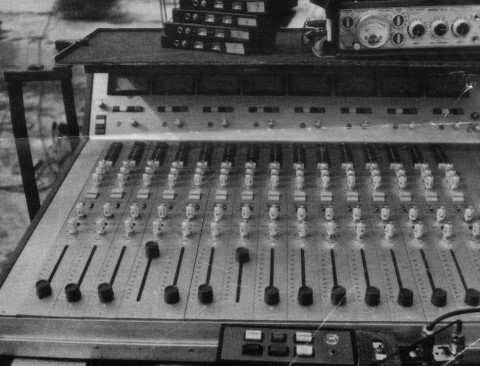
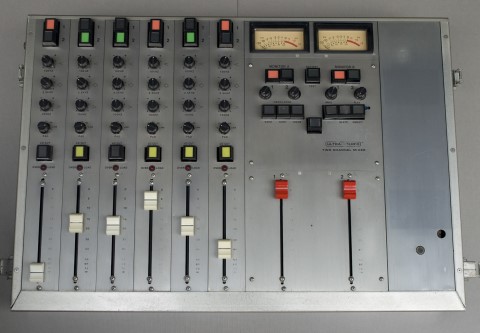

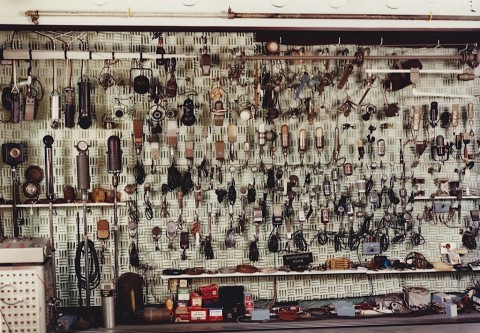
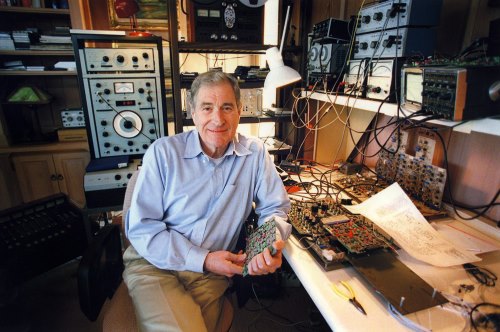
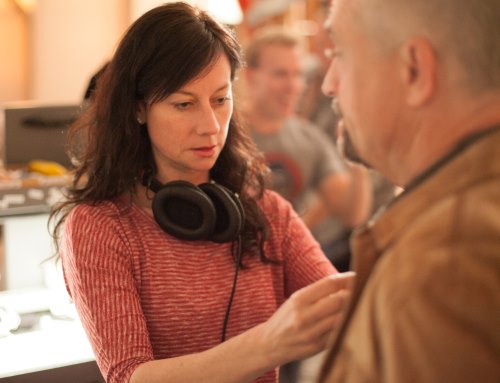
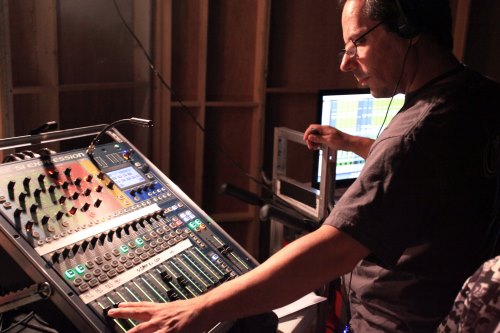
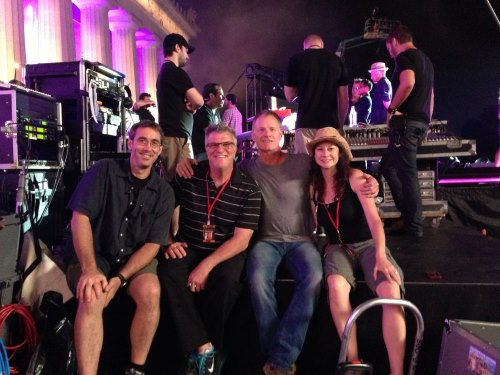
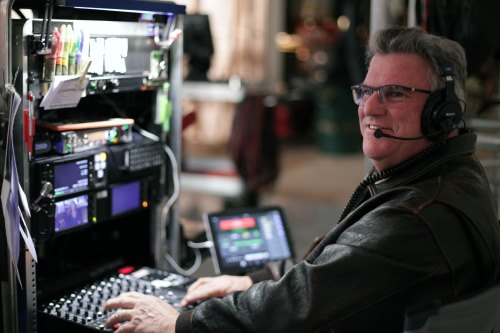

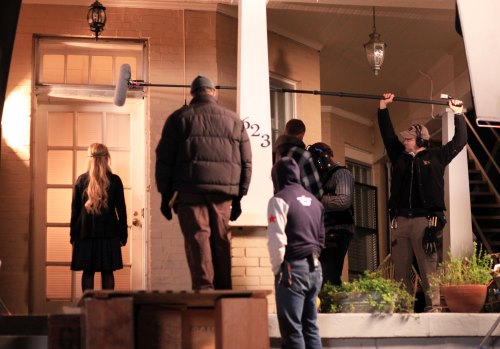
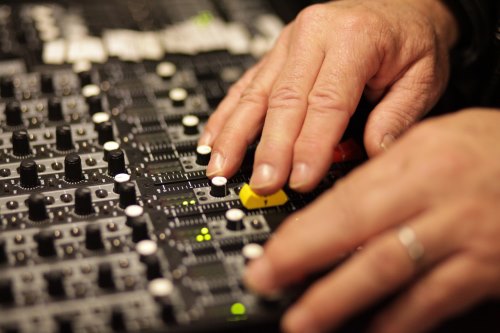
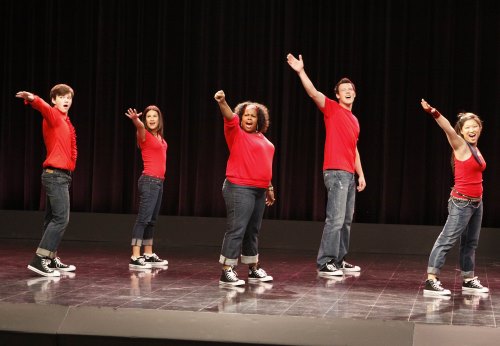
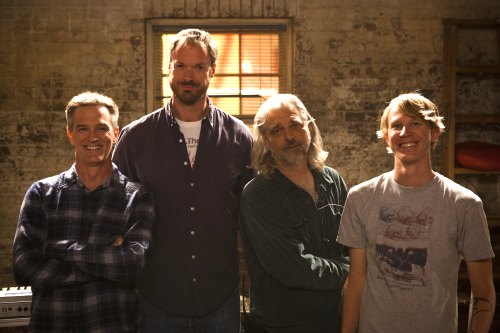
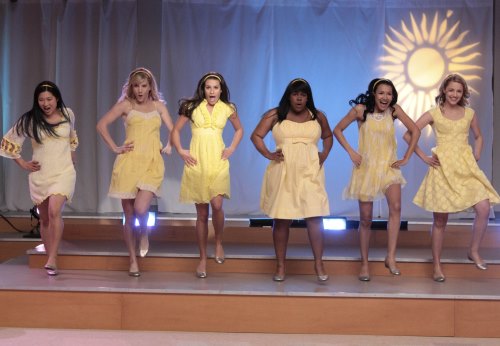
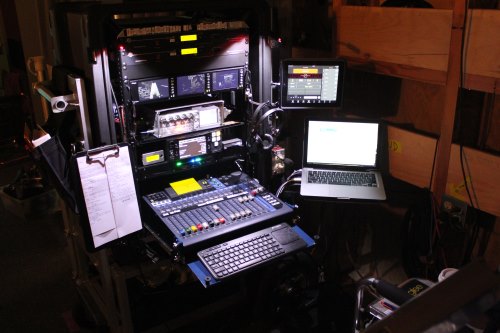
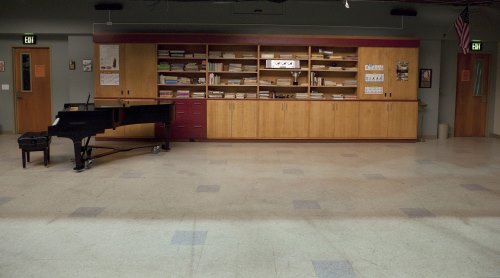
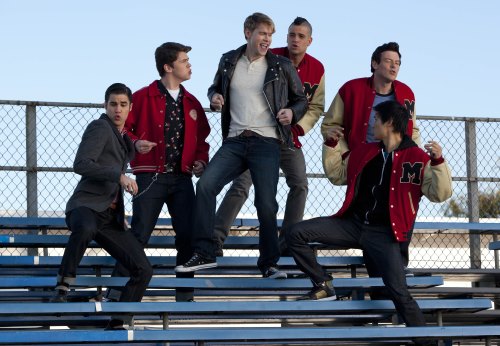
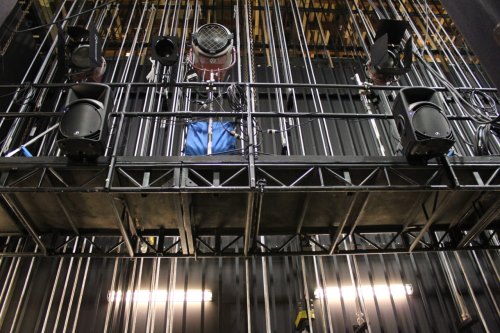
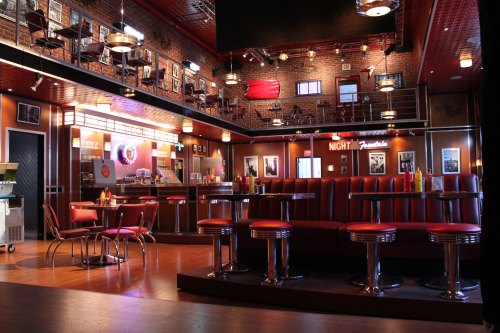
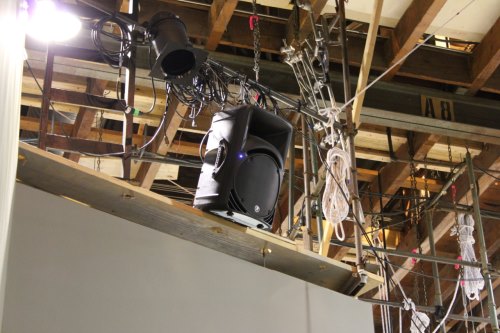
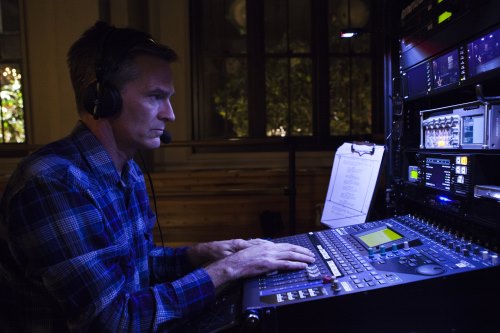
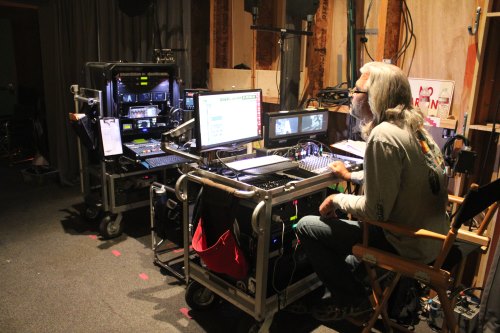
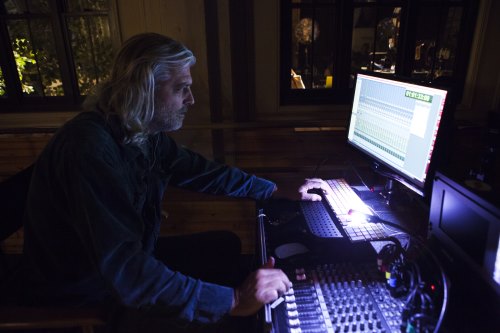
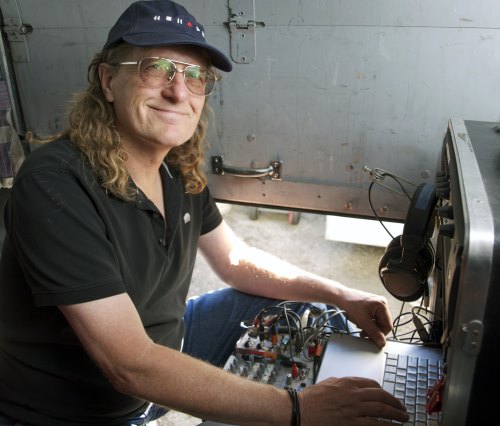
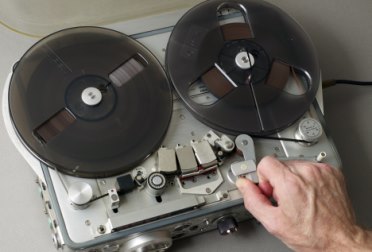 Editor bringing down this big box of about 50 seven-inch reels and us sorting through them. Then Mark announced he wanted to do the master shot all the way through. Duke Marsh, who was doing the playback with me, grabbed a second Nagra and we loaded the first part of the desired mix of the song on Nagra 1, the middle of the same song on Nagra 2, and stood by holding the pinch roller ready to let it fly on Playback. As Nagra 1 was playing, we had to start Nagra 2 at the correct spot and then, while it was playing, reload Nagra 1 with the end of the desired mix. I remember Mark Rydell came up to us after our successful playback day and said he wouldn’t do that job if someone held a gun to his head.
Editor bringing down this big box of about 50 seven-inch reels and us sorting through them. Then Mark announced he wanted to do the master shot all the way through. Duke Marsh, who was doing the playback with me, grabbed a second Nagra and we loaded the first part of the desired mix of the song on Nagra 1, the middle of the same song on Nagra 2, and stood by holding the pinch roller ready to let it fly on Playback. As Nagra 1 was playing, we had to start Nagra 2 at the correct spot and then, while it was playing, reload Nagra 1 with the end of the desired mix. I remember Mark Rydell came up to us after our successful playback day and said he wouldn’t do that job if someone held a gun to his head.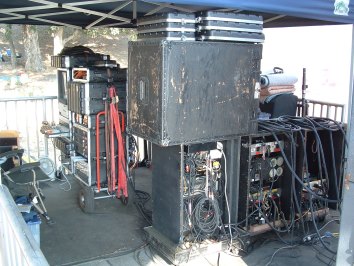 For this reason, in 1993 I switched to Pro Tools, a nonlinear computer-based system. If we had been using Pro Tools in 1990 when we did For the Boys, we could have loaded all the various playback combinations into one session and been happy clams. Pro Tools (computer-based recording, editing & playback) was vastly superior to tape systems as far as “function” (ability to manipulate the audio), although not necessarily “performance” (sound quality). It took a while for the computers to catch up with the sound quality of a Nagra; however, for playback applications, the tradeoff between function and (audio) performance was decidedly biased toward function. This is why the computer-based system (Pro Tools or similar) has become the de facto standard.
For this reason, in 1993 I switched to Pro Tools, a nonlinear computer-based system. If we had been using Pro Tools in 1990 when we did For the Boys, we could have loaded all the various playback combinations into one session and been happy clams. Pro Tools (computer-based recording, editing & playback) was vastly superior to tape systems as far as “function” (ability to manipulate the audio), although not necessarily “performance” (sound quality). It took a while for the computers to catch up with the sound quality of a Nagra; however, for playback applications, the tradeoff between function and (audio) performance was decidedly biased toward function. This is why the computer-based system (Pro Tools or similar) has become the de facto standard.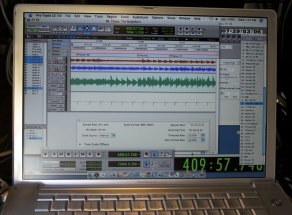 On Drag Me to Hell, a séance scene required reverse playback of the actors’ live lines. These effects could not have normally been done on set with a tape-based system.
On Drag Me to Hell, a séance scene required reverse playback of the actors’ live lines. These effects could not have normally been done on set with a tape-based system. 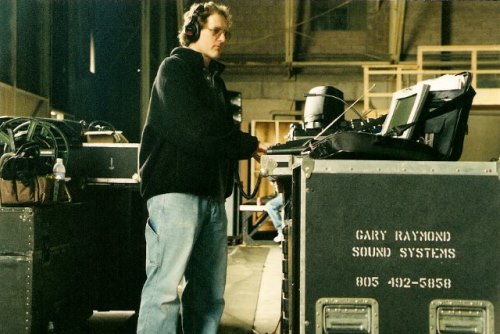
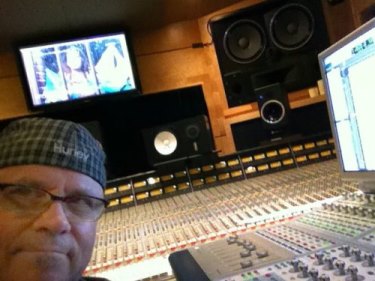 As a Local 695 professional, we hear a lot of crazy things at work and no, I’m not talking about that sick old generator staring at you fifty feet from set.
As a Local 695 professional, we hear a lot of crazy things at work and no, I’m not talking about that sick old generator staring at you fifty feet from set. How a production approaches the pre-record sessions influences the success of the whole venture. A good pre-record session should take place with awareness of how the scene is to be shot and the pace of the performance should mesh with the demands of dancing, screen action and other visual elements. Ideally, the same singers who appear on camera should record their own performances for playback (PB) tracks. It’s more natural for actors to match their own performances rather than a hired studio singer. The transition from dialog to music to dialog is more believable if the voice is the same throughout. And, if done well, the pre-record functions as a first rehearsal for the scene. It should be executed long enough in advance so that the musical performance can “season” in the actor’s brain for at least a few days.
How a production approaches the pre-record sessions influences the success of the whole venture. A good pre-record session should take place with awareness of how the scene is to be shot and the pace of the performance should mesh with the demands of dancing, screen action and other visual elements. Ideally, the same singers who appear on camera should record their own performances for playback (PB) tracks. It’s more natural for actors to match their own performances rather than a hired studio singer. The transition from dialog to music to dialog is more believable if the voice is the same throughout. And, if done well, the pre-record functions as a first rehearsal for the scene. It should be executed long enough in advance so that the musical performance can “season” in the actor’s brain for at least a few days.